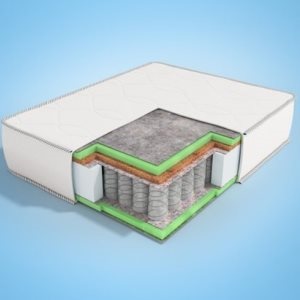
Most people consider their bed a safe haven, but new research suggests your body heat might trigger the release of potentially harmful chemicals from your mattress.
Mattresses are known to release minute amounts of gaseous chemicals called volatile organic compounds (VOCs). These VOCs come mainly from the polyurethane used in the mattress, but also from other chemicals used in flame retardants and plastics, the researchers said.
Levels of concern for infants
Unfortunately, your body heat appears to increase VOC emissions from your mattress, according to tests conducted on eight different types of polyurethane mattresses.
But don't toss out your mattress just yet: The estimated doses of most VOCs remained well below the levels that could cause health effects, researchers noted.
However, some compounds did reach levels of concern for infants and young children, if their ages were considered in exposure calculations, the researchers added.
"There is no reason to panic, and yet it is important to understand that air quality in our sleeping micro-environment is important with regard to our exposure to various pollutants such as VOCs," said senior researcher Yael Dubowski, an associate professor with the Israel Institute of Technology. "Hence, we should make an effort to improve it."
Health effects associated with VOCs range from eye, nose and throat irritation to headaches and organ damage, according to the US Environmental Protection Agency. Some VOCs, including benzene, acetaldehyde and formaldehyde, have been associated with increased cancer risk.
For the study, Dubowski and her colleagues subjected eight different mattresses to simulated sleeping conditions, mimicking the elevated body heat, humidity and carbon dioxide caused by humans when they sleep for even a few hours.
Body heat
The mattresses had been allowed to air out for at least six months prior to the study, noted Sarah Evans, an assistant professor of environmental medicine and public health at the Icahn School of Medicine at Mount Sinai in New York City.
"Often we think, well, if you let something air out for a little while, you can dramatically reduce the level of chemicals that are off-gassed," said Evans, who wasn't involved with the study. "In this case, even after six months they still saw appreciable levels of off-gassing."
Body heat appeared to increase each mattress' release of VOCs, compared with the levels released when the mattresses were not in use, researchers found.
Estimated exposures remained below the "No Significant Risk Levels" (NSRL) set under strict California environmental laws, researchers noted.
However, if the exposure levels took into account a child's age, the picture took on more concern. For example, compounds linked to cancer such as acetaldehyde, formaldehyde and benzene approached or exceeded age-adjusted levels, researchers said.
The new study was published in the journal Environmental Science & Technology.
Heightened vulnerability
Experts are generally more concerned about children's exposure to VOCs, said Dr Kenneth Spaeth, chief of occupational and environmental medicine at Northwell Health in Great Neck, New York.
Babies in particular spend a lot of time in their crib, lying on foam mattresses that produce these gases, said Spaeth, who had no part in the study.
"By virtue of their age and size, they have heightened vulnerability to potential toxic effects," he said.
Even if these chemicals don't do immediate harm, there is concern that exposure will increase their lifelong risk of cancer, Evans and Spaeth said.
The best way to protect against VOCs is to maintain good ventilation inside your home, by opening windows and using fans, they said.
"Indoor air can have as much as 10 times higher VOCs than outdoor air," Evans said. "Getting fresh air in can really help reduce those exposures."
A very difficult position
Consumers also can choose mattresses made of materials other than polyurethane foam, Evans said. Mattresses containing cotton, wool and natural latex will all produce lower levels of gases.
Unfortunately, it can be very difficult for consumers to suss out what's in a mattress and what sort of VOCs those materials might produce, Spaeth said.
"Consumers are in a very difficult position," Spaeth said. "It's very hard to get good information about what a mattress contains, and even if you know that, unless you have a good understanding of the different materials it's hard to know what chemicals might be emitted from those materials.
"The chemicals that are being emitted are not going to be listed in a label that indicates what the mattress is made of," Spaeth said. "These are by-products of the materials.
Image credit: iStock




 Publications
Publications
 Partners
Partners










